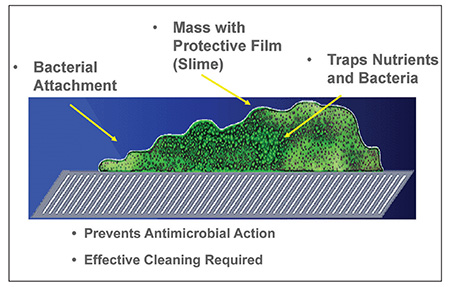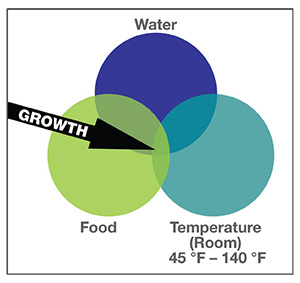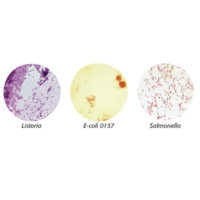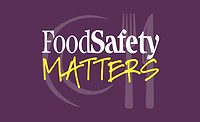Two focal points of food sanitation are protecting your brand and controlling the perpetual concerns of biofilm, Listeria and now drain maintenance. According to a 2016 article published in Time, the U.S. Food and Drug Administration recalled more than 300 million total food items, and the U.S. Department of Agriculture issued recalls for more than 60 million pounds of food. In many of these instances, the food supply contaminant was Listeria.
 Food sanitation continues to receive added emphasis in all production facilities. The Food Safety Modernization Act and improving food safety programs will be high priorities in implementing various processes within your facility in 2017. Training and educating your sanitors will continue to be key drivers as you protect your brand and/or other companies for whom you copack. One of the more recent areas that has come under scrutiny in many facilities is floor drains.
Food sanitation continues to receive added emphasis in all production facilities. The Food Safety Modernization Act and improving food safety programs will be high priorities in implementing various processes within your facility in 2017. Training and educating your sanitors will continue to be key drivers as you protect your brand and/or other companies for whom you copack. One of the more recent areas that has come under scrutiny in many facilities is floor drains.
Attempting to maintain floor drains in a food processing facility is difficult at best. The sole purpose of these drains is to handle a continual flow of waste and remove it from the processing area. By their very nature, they will have bacterial content; therefore, improper drain-cleaning procedures can ultimately provide one of the likeliest paths to cross-contamination within your facility. As drain maintenance continues to gain this level of priority for food processors, there seem to be three general options moving forward to provide chemical solutions that best fit your company and your sanitor’s plan. A key point to remember, however, is that there is no “magic bullet” for drains.
 Independent studies indicate that to control Listeria, the best one-two punch is an alkaline/chlorinated degreaser and a peracetic acid sanitizer. For many companies, these items are already in your inventory, so you can minimize SKUs along with chemical training.
Independent studies indicate that to control Listeria, the best one-two punch is an alkaline/chlorinated degreaser and a peracetic acid sanitizer. For many companies, these items are already in your inventory, so you can minimize SKUs along with chemical training.
Option number two: incorporating a two-part program that involves your team mixing two products on-site. The chemical properties of these two items are based on a caustic solution and hydrogen peroxide. By increasing the pH of peroxide, you raise its oxidizing potential so it attacks organic material faster.
The third option is using an U.S. Environmental Protection Agency-registered, high-alkaline product with Listeria monocytogenes claims and others.
Biofilm is what creates all the challenges we deal with in controlling Listeria, Salmonella, Escherichia coli…the list goes on. The key to a successful program to eliminate biofilm is agitation and/or mechanical action. We must eliminate the biofilm, thus eliminating the layering effect that makes these microbes so difficult to destroy. The use of agitation in the sanitization process is not optional.
This is analogous to car wash choices: Do you prefer brushless/touch-free, or do you prefer the soft cloth/brushes/agitation to remove the soils that have accumulated on the vehicle? While in food sanitation, there is much more at stake, we can all understand that physical agitation will remove the most soils. A common theme that emerges in many seminars that focus specifically on Listeria is: “There are no shortcuts to administering an effective sanitation program; elbow grease and agitation are the best ways to eliminate the bug concerns.”
It is all about making the right choices and taking ownership of your program. We are confident that with your knowledge and the resources available to you, the right choice becomes easier.
To learn more about how Spartan’s food processing sanitation program can help you control public enemy number one—biofilm—contact Chris Celusta, Manager—Food Processing Sanitation, SQF 2000 Systems Certified, Hazard Analysis and Critical Control Points Certified, Preventive Controls-Qualified Individual Certified, at ccelusta@spartanchemical.com.
www.spartanchemical.com


